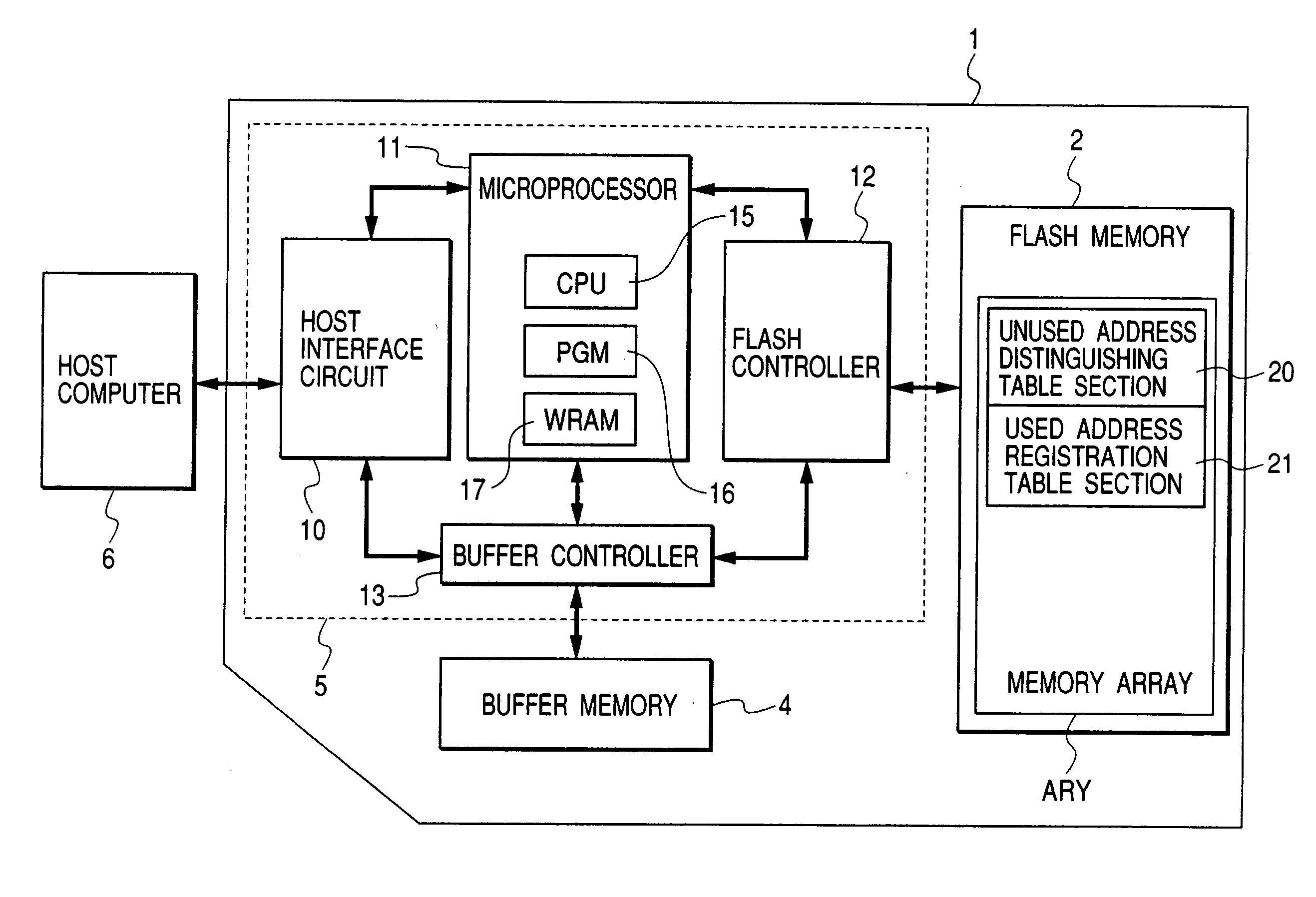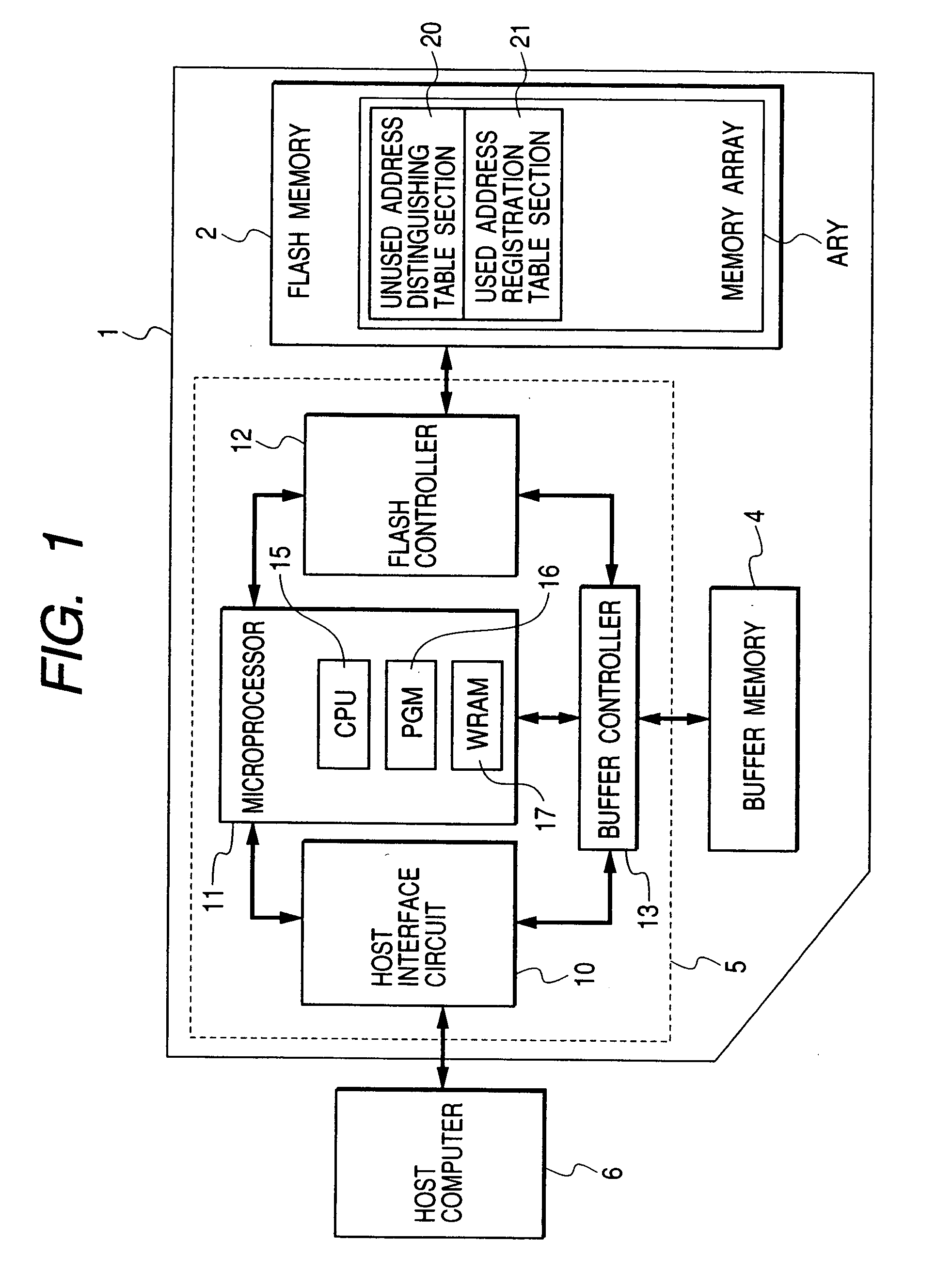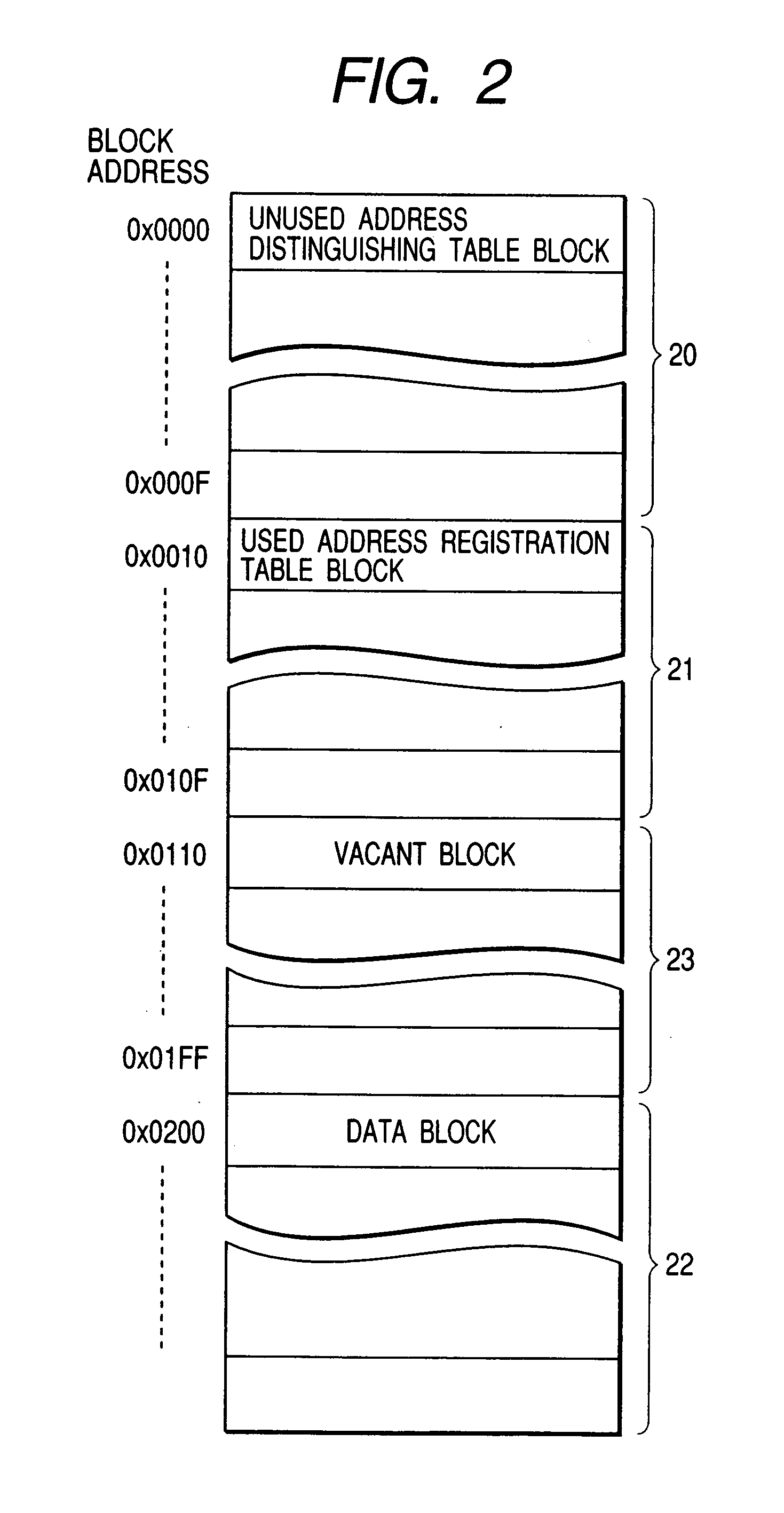Nonvolatile memory wear leveling by data replacement processing
a technology of data replacement and nonvolatile memory, applied in the direction of memory address formation, micro-instruction address formation, memory adressing/allocation/relocation, etc., can solve the problem of inability to fully realize the effect of storing information, affecting the accuracy of data replacement, and inability to store information
- Summary
- Abstract
- Description
- Claims
- Application Information
AI Technical Summary
Benefits of technology
Problems solved by technology
Method used
Image
Examples
Embodiment Construction
[0040]FIG. 1 shows a flash memory card, which is an example of memory device pertaining to the present invention. The flash memory card 1 is configured of an erasable and writable nonvolatile memory, e.g. a flash memory 2, a buffer memory 4 consisting of a dynamic random access memory (DRAM) or a static random access memory (SRAM), and a card controller (control circuit) 5 to perform memory control and external interface control, all being mounted on a package substrate.
[0041] The buffer memory 4 and the flash memory 2 are under access control by the card controller 5. The flash memory 2, though not specifically illustrated, has a memory array ARY in which a large number of electrically erasable and writable nonvolatile memory cell transistors are arranged in a matrix. Each of the memory cell transistors (sometimes alternatively referred to as flash memory cells), though not specifically illustrated, is configured of a source and a drain formed over a semiconductor substrate or in ...
PUM
| Property | Measurement | Unit |
|---|---|---|
| rewrite frequency | aaaaa | aaaaa |
| frequency | aaaaa | aaaaa |
| storage area | aaaaa | aaaaa |
Abstract
Description
Claims
Application Information
 Login to View More
Login to View More - R&D
- Intellectual Property
- Life Sciences
- Materials
- Tech Scout
- Unparalleled Data Quality
- Higher Quality Content
- 60% Fewer Hallucinations
Browse by: Latest US Patents, China's latest patents, Technical Efficacy Thesaurus, Application Domain, Technology Topic, Popular Technical Reports.
© 2025 PatSnap. All rights reserved.Legal|Privacy policy|Modern Slavery Act Transparency Statement|Sitemap|About US| Contact US: help@patsnap.com



